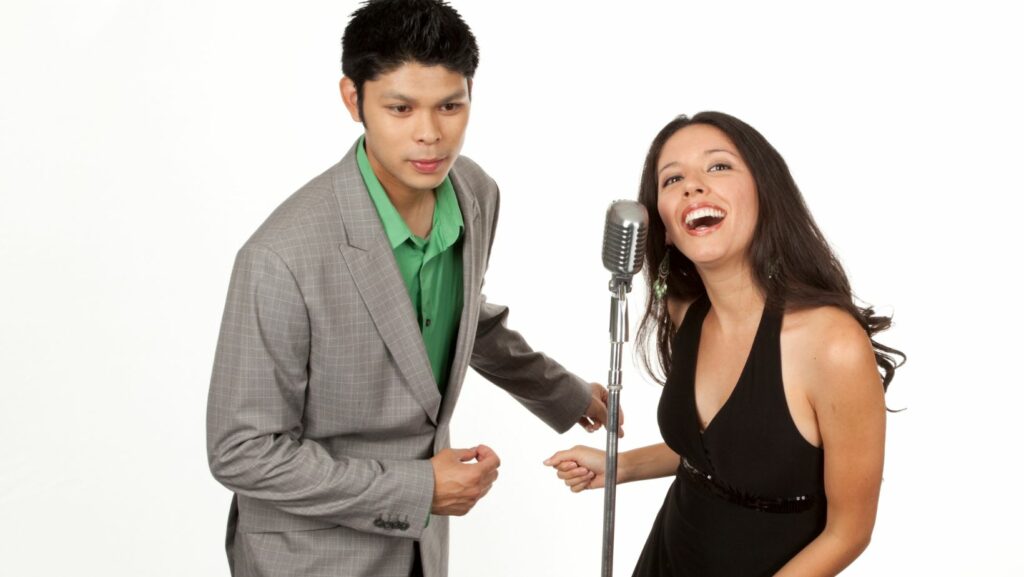Musical theater duets possess a unique magic, blending two voices to create unforgettable moments that illuminate the complex relationships and emotions between characters. From the playful banter of comedic numbers to the profound depth of romantic ballads, duets showcase a dynamic interplay of harmony and emotion.
Music Theatre Duets

Duets embody the charm of character relationships, ranging from lighthearted exchanges to heartfelt declarations. For example, “Anything You Can Do” from Annie Get Your Gun highlights comedic sparring, while “All I Ask of You” from The Phantom of the Opera captures romantic connection. These pieces often serve as pivotal moments in the narrative.
Emotional resonance is crucial, allowing audiences to connect deeply with the storyline. The interplay of melody and lyrics enhances character dynamics; songs like “A Little Priest” from Sweeney Todd blend dark humor with cunning, while “For Good” from Wicked expresses themes of friendship and gratitude, engaging viewers more profoundly.
Many duets have achieved iconic status, becoming part of theater’s cultural fabric. “Tonight” from West Side Storycaptivates with its portrayal of romantic dreams, while “Suddenly, Seymour” from Little Shop of Horrors reflects emotional support. These classic works linger in public consciousness, showcasing the enduring appeal of the duet form.
Through powerful delivery and varied narratives, music theater duets offer compelling storytelling that enhances the authenticity of onstage relationships. They immerse audiences in shared emotional journeys, exemplifying the magic woven into musical theater.
Iconic Duets Through History

Musical theater history is rich with duets that have captivated audiences. From the passionate exchanges in “People Will Say We’re in Love” from Oklahoma! to the heart-wrenching “Sunrise, Sunset” in Fiddler on the Roof, these duets exemplify paired storytelling. “A Whole New World” from Aladdin enchants with its promise of discovery.
In Les Misérables, “A Little Fall of Rain” conveys raw emotion amid adversity. The tension and release in “Defying Gravity” from Wicked resonate with themes of empowerment. Songs like “I Know Him So Well” from Chess highlight fractured yet profound connections. “No Matter What” from Whistle Down the Wind evokes tender familial bonds, while Rent’s “Light My Candle” explores complicated relationships.
These iconic duets showcase dynamic interactions and emotional storytelling. Their timeless melodies and relatable themes forge deep connections with audiences, underscoring the transformative power of musical theater.
Elements of a Memorable Duet

The choice of song is crucial in shaping a memorable duet, reflecting characters’ emotional journeys. Harmony enhances the storyline, ensuring balance so neither voice overpowers the other. Dynamic interaction conveys chemistry and tension, while lyrics reveal internal struggles. In “Anything You Can Do,” playful banter captures contrasting personalities.
Narrative progression engages listeners, as seen in “For Good,” where mutual transformation occurs. Choreography complements vocals, enhancing the visual appeal. Expressive delivery in “A Little Priest” enriches the mood, while character development centers the duet within the plot.
Musical arrangement should incorporate thematic motifs to support the vocal journey, with timing and pacing maintaining audience engagement. Each element combines to create lasting impact, elevating musical theater artistry.
Notable Composers and Lyricists
 Musical theater owes much to its composers and lyricists. Richard Rodgers and Oscar Hammerstein II revolutionized the genre with their integration of music and narrative, as seen in “People Will Say We’re in Love.” Leonard Bernstein and Stephen Sondheim created iconic pieces like “Tonight,” exploring love and conflict.
Musical theater owes much to its composers and lyricists. Richard Rodgers and Oscar Hammerstein II revolutionized the genre with their integration of music and narrative, as seen in “People Will Say We’re in Love.” Leonard Bernstein and Stephen Sondheim created iconic pieces like “Tonight,” exploring love and conflict.
Andrew Lloyd Webber and Tim Rice crafted enduring duets like “All I Ask of You,” capturing themes of longing. Stephen Schwartz’s work in Wicked, especially “For Good,” intertwines narrative progression with character development. Alan Menken and Howard Ashman brought enchantment to “A Whole New World,” evoking adventure.
These creators shaped musical theater’s history, ensuring duets remain integral to storytelling, leveraging music’s power to convey complex emotions.
Performance and Interpretation
 Performers in music theater duets must master vocal harmony, blending timbres and synchronizing phrasing for a cohesive sound. Connecting with characters allows for authentic emotional expression. Staging and choreography add layers of meaning, as seen in “Anything You Can Do,” where movements highlight the comedic tone.
Performers in music theater duets must master vocal harmony, blending timbres and synchronizing phrasing for a cohesive sound. Connecting with characters allows for authentic emotional expression. Staging and choreography add layers of meaning, as seen in “Anything You Can Do,” where movements highlight the comedic tone.
Audience engagement is essential; actors gauge reactions to maintain connection, creating an interactive experience. Ultimately, skilled interpretation transforms simple melodies into profound theatrical moments.
Popular Duets for Auditions
Musical theater duets are popular for auditions, showcasing vocal range and acting skills. Songs like “For Good” and “A Whole New World” allow performers to demonstrate harmony and emotional connection. Selecting a duet involves considering character dynamics, enabling performers to create memorable audition pieces that underscore the enduring significance of musical theater duets.

